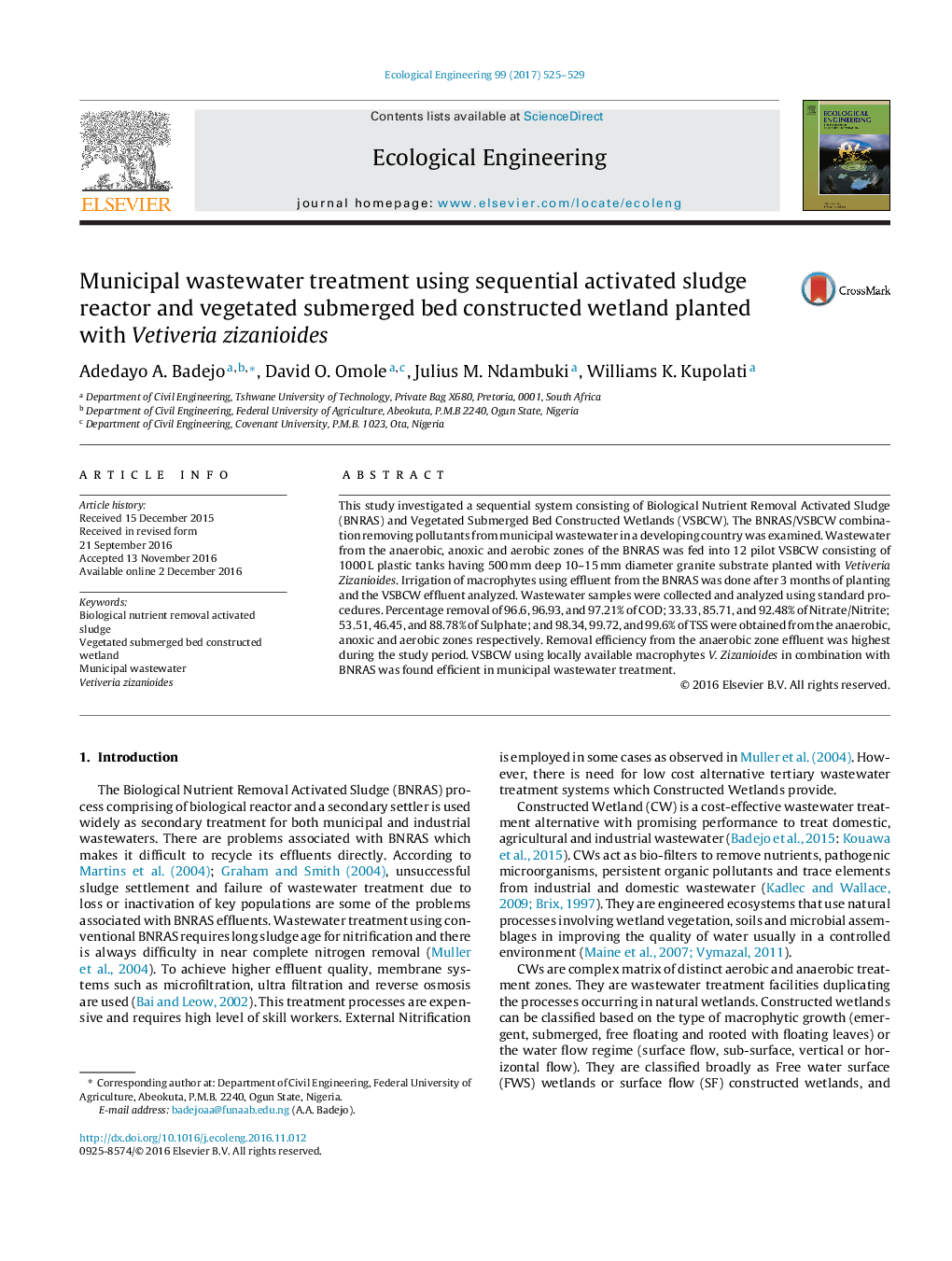| Article ID | Journal | Published Year | Pages | File Type |
|---|---|---|---|---|
| 5744022 | Ecological Engineering | 2017 | 5 Pages |
This study investigated a sequential system consisting of Biological Nutrient Removal Activated Sludge (BNRAS) and Vegetated Submerged Bed Constructed Wetlands (VSBCW). The BNRAS/VSBCW combination removing pollutants from municipal wastewater in a developing country was examined. Wastewater from the anaerobic, anoxic and aerobic zones of the BNRAS was fed into 12 pilot VSBCW consisting of 1000Â L plastic tanks having 500Â mm deep 10-15Â mm diameter granite substrate planted with Vetiveria Zizanioides. Irrigation of macrophytes using effluent from the BNRAS was done after 3 months of planting and the VSBCW effluent analyzed. Wastewater samples were collected and analyzed using standard procedures. Percentage removal of 96.6, 96.93, and 97.21% of COD; 33.33, 85.71, and 92.48% of Nitrate/Nitrite; 53.51, 46.45, and 88.78% of Sulphate; and 98.34, 99.72, and 99.6% of TSS were obtained from the anaerobic, anoxic and aerobic zones respectively. Removal efficiency from the anaerobic zone effluent was highest during the study period. VSBCW using locally available macrophytes V. Zizanioides in combination with BNRAS was found efficient in municipal wastewater treatment.
